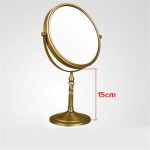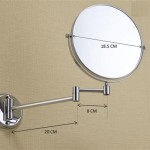Carved Wood Mirrors: A Fusion of Functionality and Art
Carved wood mirrors are more than just reflective surfaces; they are intricate works of art that add depth, texture, and a touch of history to any space. The combination of wood carving and mirroring creates a unique aesthetic that blends functionality with artistry, making them a popular choice for interior design enthusiasts. This article explores the world of carved wood mirrors, delving into their history, the artistry involved, and the diverse styles available.
A Glimpse into History
The art of wood carving has been practiced for centuries, with evidence dating back to prehistoric times. Mirrors, too, have a long history, with early civilizations using polished metals and obsidian to reflect light. The marriage of these two crafts likely occurred during the Renaissance, when skilled artisans began incorporating intricate wood carvings into ornate frames for mirrors. These early examples often featured biblical scenes, mythological figures, and intricate floral motifs, reflecting the artistic sensibilities of the time. As centuries passed, the art of carving evolved, embracing various styles and themes influenced by different cultural and historical movements.
The Art of Wood Carving
Carved wood mirrors showcase the meticulous craftsmanship of skilled artisans. The process begins with the selection of high-quality wood, often hardwoods like oak, walnut, or mahogany, known for their durability and beautiful grain patterns. The wood is then meticulously shaped and carved using hand tools or specialized machinery, depending on the complexity of the design. The level of detail in carving can vary significantly, from simple geometric patterns to intricate floral motifs, animal figures, or even elaborate scenes. Each piece is unique, bearing the artist's personal touch and the distinct characteristics of the wood itself. While some designs are traditional, contemporary artists continue to push the boundaries of wood carving, incorporating modern elements and techniques.
Styles and Designs
Carved wood mirrors come in a variety of styles, each reflecting a different aesthetic and historical influence.
Traditional Styles
Traditional carved wood mirrors often feature ornate frames with intricate carvings. These frames often incorporate classic motifs such as scrolls, acanthus leaves, and rosettes, reminiscent of Baroque and Rococo periods. These mirrors add a touch of elegance and sophistication to classical and traditional interiors.
Modern Styles
Modern carved wood mirrors embrace minimalist designs and clean lines. They often feature geometric patterns, abstract forms, or simple, unadorned frames. These mirrors complement contemporary and minimalist interiors, adding a touch of sophistication without overwhelming the space.
Regional Styles
Carved wood mirrors can also reflect the cultural and artistic traditions of specific regions. For instance, mirrors from South America might feature intricate carvings inspired by indigenous art, while those from Asia might showcase ornate motifs reflecting their cultural heritage. These regionally specific mirrors add a touch of authenticity and cultural richness to any interior.
Beyond Decoration: The Practicality of Carved Wood Mirrors
Carved wood mirrors offer more than just aesthetic appeal. They are practical additions to any space, serving multiple purposes.
Amplifying Light
Mirrors reflect light, brightening and expanding the perceived size of a room. Placing a carved wood mirror strategically can create a more luminous and welcoming atmosphere, especially in dimly lit areas.
Creating Depth and Illusion
Mirrors can be used to create the illusion of depth and space. Placing a carved wood mirror on a wall can make a small room appear larger or create a sense of expansiveness in a tight space. The intricate details of the carving can also draw the eye, adding a visual focal point and enhancing the room's aesthetic appeal.
Adding Character and Personality
Carved wood mirrors are unique pieces that instantly add character and personality to any space. Their intricate details and rich wood tones create a sense of warmth and inviting atmosphere, transforming a simple room into a more inviting and aesthetically pleasing environment.
Conclusion
Carved wood mirrors are a testament to the enduring beauty of craftsmanship and the artistic possibilities of wood carving. Whether you prefer traditional or modern styles, these unique pieces add depth, texture, and a touch of history to any space. By combining functionality with artistry, carved wood mirrors elevate the ordinary, creating a captivating focal point that enhances the overall aesthetic of any interior.

Hand Carved Wooden Mirror Mid Century Modern For Wall Décor Ornate Mount Large Mirrors Decorative

Levon Natural Carved Wood Wall Mirror By Leanne Ford Reviews Crate Barrel

Gilt Wood Carved Mirror Mirrors European Antique Warehouse

Customized Hand Carved Wooden Mirror Frame Moroccan Vintage Israel

Vintage Style Wall Mirror N Carved Wooden Rustic Israel

Natural Carved Wood Round Mirror Kirklands Home

Ornate Rococo Style Carved Wood Mirror From Bali Artisan Mataram Novica

Hand Carved Wood Mirrors From Bali Kulture Home Decor

Carved Wood Decorative Mirror Pottery Barn Teen

Savannah Carved Floral Motif Wood Mirror








